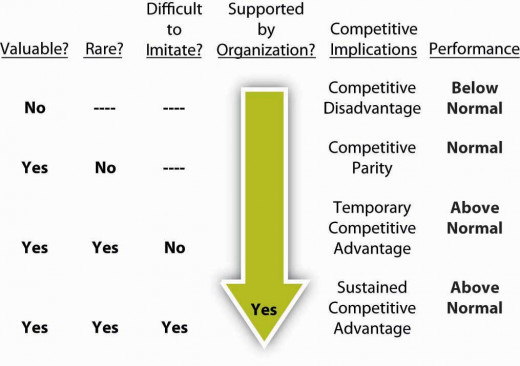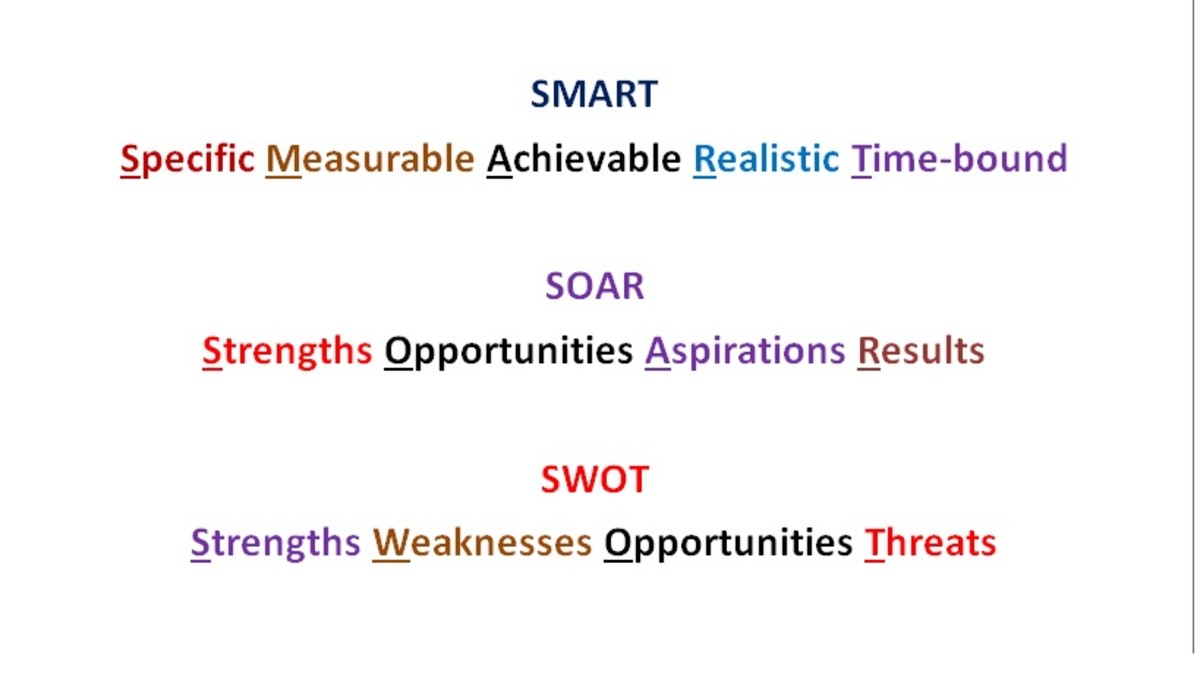How specific would the identification of strategic capabilities need to be in order to achieve advantage?
They consist of resources or competences that provide a firm with a competitive advantage. Prahalad and Hamel (1990) suggested that competences are skills, activities or resources that deliver customer value and differentiate a business from its competitors. Put simply, a strategic capability is something that a firm does well which gives them a competitive advantage over other firms. There are three types of capabilities; threshold capabilities which give the firm a basic level of competitiveness, distinctive capabilities which gives the firm successful competition and dynamic capabilities which renew or recreate strategic capabilities. These capabilities need to be identified in order to develop them and protect them from being imitated or lost and therefore losing competitive advantage.
Prahalad and Hamel suggested that competences need to be specific by providing access to a variety of markets. They also need to make a contribution to customer benefit of the product and most importantly, they need to be difficult for competitors to imitate.
The VRIN framework suggests that capabilities need to be of value to the firm by providing a competitive advantage. They need to be rare in order to differentiate a firm from one another and again provide competitive advantage. They need to have inimitability and non-substitutionality.
However, Priem and Butler (1991) suggest that it is hard to identify specific strategic capabilities. This leads to their point that managers cannot manage competencies in order to gain competitive advantage because they are effectively managing competencies that they may not know exist.
Prahalad and Hamel and the VRIN framework suggest that strategic capabilities need to be specific in order to be managed to gain strategic advantage. However, it is very hard to find capabilities that fit in with the VRIN framework, as suggested by Barney (2001), and Priem and Butler agree with this in a way by saying that it’s hard to identify specific strategic capabilities. Strategic capabilities need to be specifically identified in order to be managed effectively to gain competitive advantage. If they are not specific, as suggested by Priem and butler, they will not be of any practical help to managers in gaining competitive advantage.
Do you agree that if it were possible to identify and manage such capabilities they would be imitated?
The VRIN framework suggests that capabilities should adhere to the following; add value to the firm, rarity, inimitability and non-substitutionability. Prahalad and Hamel (1990) suggest that competencies should be unable to be imitated.
The fact that when identifying capabilities managers look for resources or competences which are hard or impossible to imitate would suggest that if it were possible to identify and manage them efficiently they would not be able to be imitated.
However, Priem and Butler (1991) do suggest that different resource configurations can generate the same value for firms and thus would not lead to one firm gaining competitive advantage over the other.
I think that if you can identify and manage capabilities then they should not be able to be imitated easily as imitability was one of the factors when considering that capability. However, this does not mean that this capability will be the only source of competitive advantage and the company has to be careful to ensure that they have the right configuration of competencies in order to maintain their competitive advantage.

Is the RBV useful?
The resource-based view (RBV) is the pursuit of competitive advantage through identification of strategic capabilities. RBV involves three steps. First is the identification of potential key resources. The second step uses the VRIN framework, which is the assessment of the resources by their value, rarity, inimitability and non-sustainability. Finally, these resources identified must be cared for and protected.
Prime and Butler (1991) said that there is a huge risk of tautology in RBV. This is where the theory is self-verifying by saying that resources that lead to competitive advantage are valuable and rare. However, competitive advantage is defined in terms of rarity and value. This therefore can lead to self-verification. RBV suggests that a business can perform better because it has superior resources or is better at something but this is not helpful to an organisation without being specific. Priem and Butler also suggested that different resource configurations can generate the same value for firms and this would not lead to competitive advantage because even though some businesses do some things better that others, the different configurations mean that they still provide the same value to the market. They also suggested that the role of product markets is underdeveloped in the RBV. Assets to a company regarding product specifics such as patents, designs and product advantage have not been discussed enough. It has also been suggested, by Priem and Butler, that the RBV has limited prescriptive implications. Meaning that it is difficult to use the RBV in companies when considering competitive advantage because it is hard to identify the key competitive resources and also difficult to compete just on resources alone. Other aspects of an organisation need to be considered. Barney (2001) said that it is difficult to find resources that satisfy the VRIN framework. He also said that the RBV ignores external factors in industry concerning competitive advantage such as Porter’s (2008) five forces. Barney also suggests that a firm cannot manage resources it doesn’t know exist and therefore analysis of an organisation is key when considering an RBV approach. RBV also suggests a promise of efficient markets. However, the future value of a resource cannot be predicted. Barney also suggests that the concept of rarity is obsolete and that firms cannot compete on resources that are rare alone. He also suggests that the sustainability of the RBV comes into question because you can’t test it empirically, being that competitive advantage is only sustainable if rivals stop their imitative efforts. He suggests that the RBV is versatile from the point of view of the developing framework but that its disadvantage comes from its practical point of view because the RBV suggests that there is no end goal and therefore firms need to constantly consider and identify competitive advantage through resources and keep developing and protecting these to retain advantage.
Barney also identifies advantages of the RBV. He suggests that it is useful because it highlights the importance of the identification of critical capabilities of firms to be identified by management in order to utilise, develop and protect these capabilities. Barney also suggests that culture can be a source of competitive advantage but only in such a way that the assets, resources and competency’s embedded in the culture cannot be imitated. However, he also suggested that this would make it difficult for managers to utilise and manage this aspect of competitive advantage. This would agree with Priem and Butlers suggestion that the RBV is not helpful in terms of being useful for managers.
The Research Based view is useful because, as Barney suggests, it identifies key resources that a company possesses that could help it gain competitive advantage over its rivals. It also looks at protecting these resources and developing them further to maintain competitive advantage. However, there are several problems with the RBV. The main problems of the RBV are that it is hard to identify specific resources that lead to competitive advantage. Firms can’t manage or utilise resources it doesn’t know exist or can’t identify. RBV doesn’t consider some vital factors that have a huge impact on the theory such as external factors and the role of product markets. Another major problem with the RBV is that it is based on a constant efficient market that as we know doesn’t exist. The market will always change and therefore the future value of a resource cannot be predicted. These are just some of the problems identified with the RBV. I think that the RBV is useful because it suggests that managers need to identify key resources that they can utilise to provide competitive advantage. However, the theory as a whole has to many impractical and unrealistic suggestions tied with vital considerations and factors that have been missed out. This makes the theory useful to consider, but I would not base a company’s approach to competitive advantage solely around the RBV as I think it would be an unsustainable way to manage and maintain advantage.
References
- Barney, J. B. ‘Is the resource based view a useful perspective for strategic management research? Yes’. Academy of Management Review, vol. 26, no. 1 (2001), pp.41-56
- Johnson, G. Whittington, R. Scholes, K. (2011) Exploring strategy: text and cases. Ninth edition. Prentice Hall: Financial times.
- Porter M.E. "The Five Competitive Forces that Shape Strategy", Harvard Business Review, January 2008, p.86-104.
- Prahalad, C.K. and Hamel, G. (1990) The core competence of the corporation, Harvard Business Review (v. 68, no. 3) pp. 79–91.
- Priem, R. and Butler, J.E. ‘Is the resource based view a useful perspective for management research?’ Academy of management review, vol. 26, no. 1 (2001), pp. 22-40.








